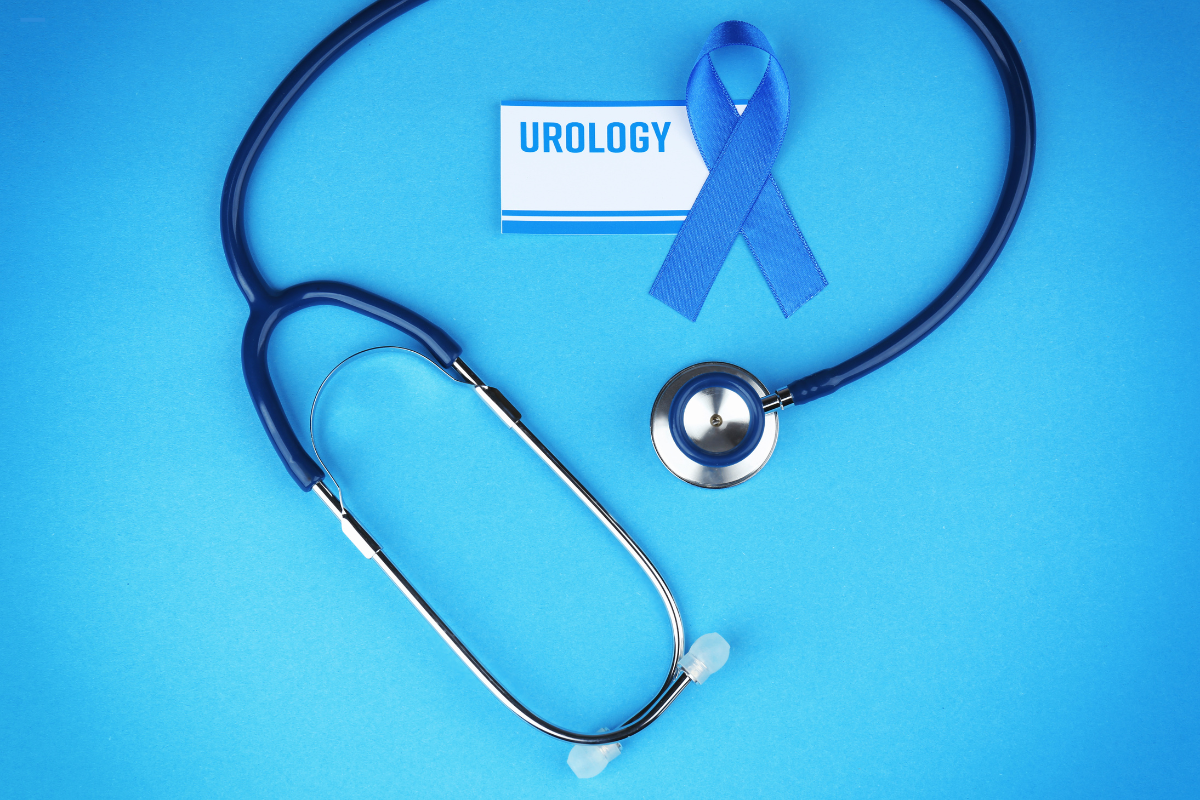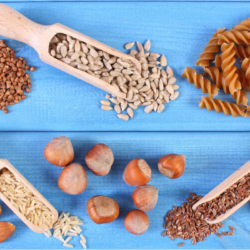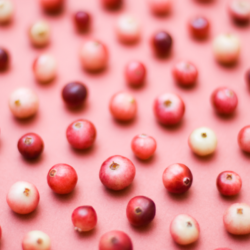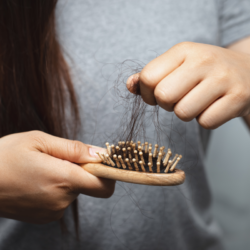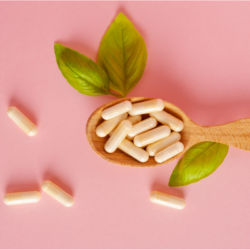Prostate adenoma or benign prostatic hypertrophy is a common disease in men aged 50 and over. It is often the cause of urinary problems that affect quality of life.
Although it is difficult to prevent the onset of prostate adenoma, adopting a healthy lifestyle can reduce the discomfort and complications associated with this condition. Let’s start by looking at the medicinal plants available for prostate hyperplasia. We’ll then look at some tips for everyday use.
Are there medicinal plants to relieve benign prostatic hyperplasia?
For many years, herbal treatments were the only ones offered to patients. These plants are often used in combination to relieve benign prostate disorders. In 2012, the European health authorities evaluated dietary supplements for the prostate. They found a lack of evidence of efficacy. As a result, they banned prostate health claims for products containing isoflavones, phytosterols, selenium, zinc or lycopene.
Florida Palmetto
The WHO and the German Commission E specifically recognise the use of Florida palmetto in the treatment of urinary disorders associated with mild to moderate benign prostatic hyperplasia. Florida palmetto interacts in a complex way with testosterone metabolism in the prostate. It inhibits the activity of 3-α-ketosteroid reductase. It also inhibits the activity of isoforms 1 and 2 of 5-α-reductase.
The activity of this enzyme increases with age. It is responsible for converting free testosterone into dihydrotestosterone (DHT). DHT, a more potent androgen, is the main metabolite. It stimulates the development of fibroblasts in the connective stroma of the prostate.
Unlike 5 α-reductase synthesis inhibitors, Florida palmetto hexane extract induces this effect without interfering with the cells’ ability to secrete PSA. This ability means that PSA measurements can be used on an ongoing basis for prostate cancer screening.
Florida palmetto hexane extract also inhibits the activity of methyltrienolone. This substance is a powerful synthetic agonist of androgen receptors. It prevents the binding of this synthetic androgen to the prostatic cytosolic receptors on which DHT also acts.
Inhibition of 5 α-reductase by Serenoa repens is accompanied by a reduction in the growth of human prostatic carcinoma cells in vitro. This antiproliferative action is accompanied by induction of apoptosis.
Nettle root
The roots of stinging nettle(Urtica dioïca), which contain lignans with properties similar to female hormones, are being studied for their effects on prostate adenoma. However, the clinical trials conducted lack methodological rigour and provide no formal scientific proof of their efficacy.
Unlike other institutions such as the WHO, the European Commission and ESCOP, the European Medicines Agency (EMA) considers these studies to be inconclusive. BPH, which requires medical treatment, is not traditionally treated with nettle root. In phytotherapy, nettle leaves and roots are used in different ways. The leaves have anti-inflammatory properties, while the roots are used to relieve benign prostate disorders.
The WHO recognises the effectiveness of nettle root for urinary problems associated with BPH. This use is validated in the absence of prostate cancer. Nettle root has diuretic properties. It facilitates drainage and renal elimination. These effects are beneficial for men with BPH. They help to improve urination and urinary comfort. In France, BPH affects one man in four over the age of 50. This is because the prostate increases in size with age.
However, a doctor should be consulted before using nettle root. Nettle root is contraindicated for people with heart or kidney problems, pregnant or breast-feeding women and children under the age of 12, and may also cause erectile dysfunction in some men.
Small-flowered willowherb
The tannins contained in small-flowered willowherb, oenothein A and oenothein B, also inhibit the activity of the 5-alpha-reductase and aromatase enzymes involved in the pathogenesis of benign prostatic hyperplasia, without being the only anti-proliferative active ingredients.
Characterisation of the plant
Fireweed(Epilobium angustifolium) is recognised for its effectiveness in treating prostate disorders, in particular benign prostatic hyperplasia, and for improving male urinary comfort. Its active ingredients counteract the production of prostaglandin, an inflammatory molecule often present in benign prostatic hypertrophy. Other ingredients specifically inhibit the development of the molecules responsible for hyperplasia, such as 5-alpha-reductase and aromatase.
Native to Europe and Asia and abundant in the French Alps, this perennial plant is used in phytotherapy thanks to its aerial parts. Two varieties are distinguished on the basis of their specific therapeutic action:
- Epilobium parviflorum: small-flowered variety, promoted by Maria Treben.
- Epilobium angustifolium: the subject of numerous scientific studies.
Both varieties are recognised as equivalent according to traditional use, and are listed in the monograph of the European Medicines Agency. Fireweed contains phenolic compounds (including ellagitannins such as oenothein B), tannins, flavonoids, phytosterols, vitamin C and provitamin A.
Recognised by the European authorities for its benefits for the urinary tract, particularly in men, fireweed helps the urinary system and prostate to function properly.
Indications
The forms of administration and doses of fireweed, based on traditional use, are as follows:
- Infusion: 1.5 to 2 g of dried plant in 250 ml of hot water, up to 2 cups per day.
- Powder: 600 to 2000 mg per day.
- Mother tincture: 20 to 30 drops, 2 to 3 times a day.
- Capsules: 3 to 5 capsules of 200 mg per day.
Fireweed has no known contraindications, with the exception of use in pregnant women and children under the age of 12. There are no known side-effects associated with this treatment. To maximise its benefits for the prostate, taking it before or during meals is recommended, and long-term use has been shown to be safe.
Lycopene
Lycopene, an antioxidant found in tomatoes, could be beneficial in the treatment of benign prostatic hyperplasia, according to German researchers.
Tomato lycopene is known to prevent prostate enlargement and reduce symptoms in elderly men. The combination with selenium increases the anti-inflammatory effect and the reduction in prostate volume. It reduces the expression of growth factors and cell proliferation. A study carried out in 2011, both in vitro and in vivo, validated the benefits of combining Florida palm, lycopene and selenium. In addition, a review of the literature in 2016 indicated that the combination of these components would be more effective than using the plant alone.
A few tips to improve quality of life
- Free your prostate: regular sexual activity, including masturbation, can be beneficial. This could limit the development of benign prostatic hyperplasia (BPH).
- Urinate on demand: it’s important not to hold back to urinate to avoid bladder irritation. Plan breaks to urinate every 4 hours, especially if you feel the urge to urinate frequently.
- Avoid certain foods: cut down on spicy foods, salty foods, alcohol, caffeinated drinks and chocolate. Eat a varied diet, rich in vegetables and low in fat.
- Exercise: regular physical activity helps maintain good muscle tone, which is essential for controlling urination. However, avoid sports that cause the bladder to shake excessively.
- Be careful with certain medications: decongestants, diuretics and antihistamines can aggravate BPH symptoms.
- Moderate fluid intake in the evening: to avoid waking up at night, limit fluid intake after 7pm and avoid diuretic drinks.
- Regular medical check-ups: have regular check-ups. A digital rectal examination or urography can be used to monitor the condition of the prostate.
Consult a doctor if you experience urinary difficulties or pain when urinating. You should also consult a doctor before taking any medication if you have urinary symptoms.
A normal BMI, a balanced diet and appropriate physical activity can reduce the risk of BPH. Food supplements have no proven effectiveness in preventing or treating BPH.
Sources:
- Bayne C.W. et al, Serenoa repens (Permixon); a 5 alpha-reductase types I and II inhibitor-new evidence in a coculture model of BPH, Prostate, 1999
- Habib F.K. et al. Serenoa repens (Permixon) inhibits the 5 alpha-reductase activity of human prostate cancer cell lines without interfering with PSA expression; Int J Cancer, 2005
- https://www.vidal.fr/maladies/reins-voies-urinaires/hypertrophie-benigne-prostate-hbp/phytotherapie-plantes.html

